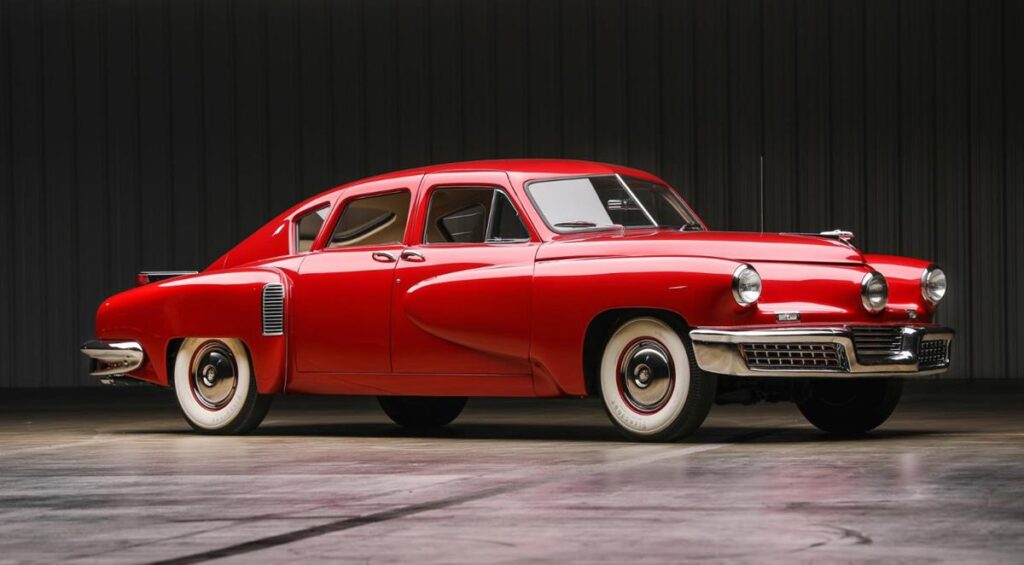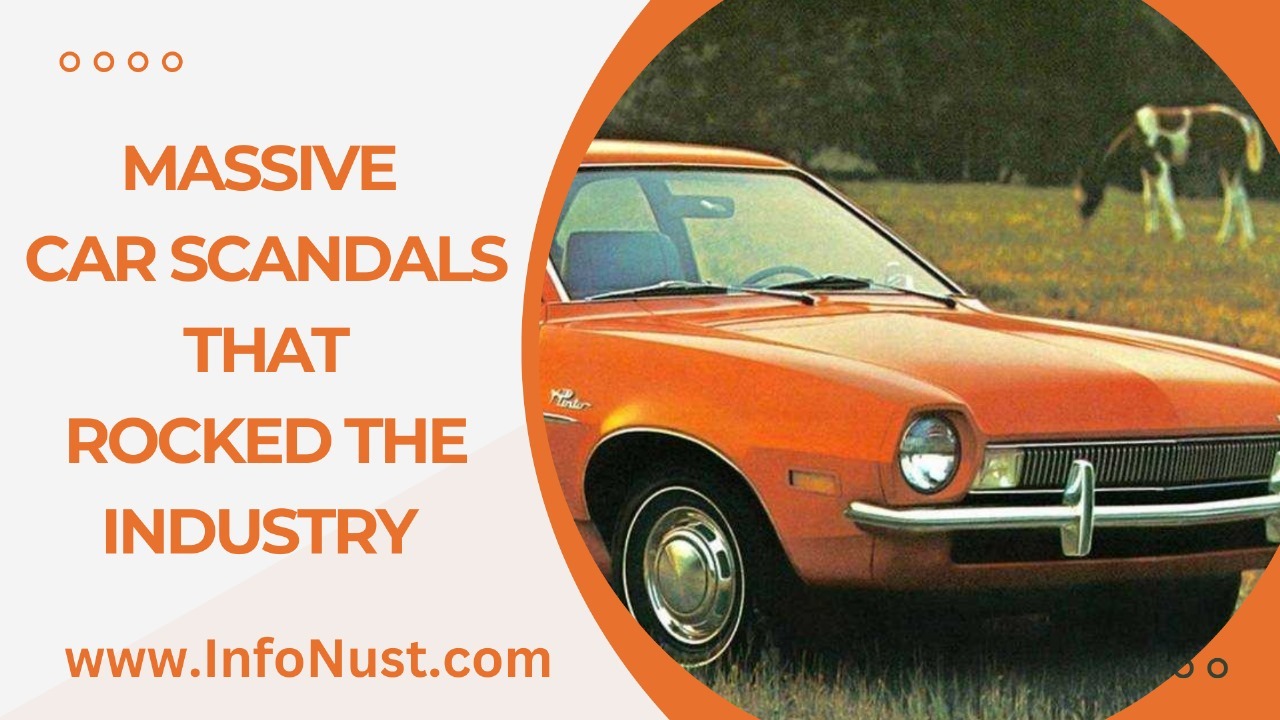Massive Car Scandals That Rocked The Industry. Manufacturing of automobiles is in the top ten most important industries worldwide. According to Statista.com the world’s automotive industry grew to $2.86 trillion by 2021. Although the growth rate is slow following the impact of COVID. The market is predicted to grow to around $2.95 trillion by 2022. Automobile maker Ford Motor Company is one of the biggest. With 2020 profit in the range of $136.34 billion (down from $155.9 billion in 2019 because of COVID).
With the possibility of a huge amount of revenue automakers are highly motivated to discover ways. To outdo their competitors as well as recieve shares of the market. Like any other industry maximising profits through cutting operating expenses is usually the strategy followed. Sometimes, the payoff are beneficial to the consumer through improved performance, technology and safety, but sometimes the result is disastrous.
According to CarBuzz In 2014 alone over 60 million cars were subject to recalls. A majority of these recalls dealt with security concerns. The majority of car companies are genuinely seeking to fix the flaws in their systems that could expose drivers to danger. However, a few carmakers and suppliers have engaged fraudulent actions for the purpose of improve profits. If these practices are exposed to the general public, a massive scandal can result. Here are 12 major car scandals that have rocked the auto industry.
General Motors advertisements kill the Chrysler Airflow
The Chrysler Airflow was launched in 1934, it marked an important departure from conventional car design. It was built with the most radical aerodynamic style which distinguished it from other automobile in the market. At the time of car manufacturing, little thought was paid to aerodynamics of the body and the effects in the performance of winds resistance. Yet, Chrysler engineers Carl Breer, Fred Zeder. And Owen Skelton realized that cars constructed with internal compressor engines that were used at the day could not complete their full efficiency. They had a meeting with the aviation pioneer Orville Wright. Who proposed building an air tunnel to test aerodynamics in automobiles on tiny-scale models.
Chrysler followed Wright’s suggestions and built the first wind tunnel that was fully-scaled located at the headquarters of the company in Highland Park, Michigan. The first wind tunnel tests offered Chrysler engineers with surprising outcome. They found that Chrysler models made in the 1930s had lesser wind resistance when they were driven forward. The findings resulted in the development of a new teardrop design, and then Airflow’s sleek body design.
General Motors felt so threatened by the sophisticated design of its nearest competitor. That the company published ads within The Saturday Evening Post claiming that the car was a replica of a secret GM design. In addition, GM declared the car unsafe to drive. The smear campaign was successful, GM faced no repercussions for its actions and the Airflow was shut down in 1937.
Tucker 48 fraud charges. Tucker 48 fraud case

It was 1948 when American automotive designer Preston Tucker introduced a brand new, advanced automobile on the market. The car captivated the attention of the public with its sleek design. Innovative protection features as well as firsts in engineering in the auto industry. However, the creator’s suspect business practices. Which included selling dealership rights prior to the vehicle existed. Led to inquiry of the Securities and Exchange Commission for fraud.
The most distinctive characteristic in Tucker 48’s distinctive feature Tucker 48 was its “Cyclops Eye,”. An incredibly centrally placed third directional headlight. That could be activated to illuminate the vehicle’s course through corners. When the steering angle was that were greater than 10 degrees. While earlier automobiles had big headlamps that rotated while the front wheels rotated. However, there was no rotating headlamp that was mounted flush to the front of the vehicle. In 1948 17 states had laws that prohibited cars that had at least two headslights. However Tucker constructed a cover to the center light in order to comply with the regulations of the states. The car also had modern safety features. Such as the shatterproof pop-out windshield a safety cell that was reinforced, as well as padding for the dash.
In desperate need of cash, Tucker began selling car options and other accessories to customers who’s cars were yet to be constructed. But, after a series of delays hindered production the government intervened. In 1950 the SEC was able to indict Tucker as well as his Board of Directors on fraud charges and shut down the company’s operations. The company produced only 51 vehicles. Today Tucker 48 is Tucker 48 is one of the most sought-after classic automobiles around the globe.
Ford Pinto exploding fuel tank

The energy crisis of the 1970s prompted American automakers to develop smaller, less fuel-efficient vehicles. Ford released the Pinto as its entry into the market for small-sized vehicles. The Pinto was an early hit with the production of 352,402 units in 1971. A maximum of 544,209 built in 1974. But the Pinto was plagued by an issue that Ford was aware of before the first models came off the production line.
In April 1974, the Center for Auto Safety requested the NHTSA recall Ford Pintos due to a gas tank design defect that made. The vehicles susceptible to fire during low-to-moderate-speed rear-end collisions. The Center’s request was prompted by four deaths and three serious injuries.
It was in 1977 that Mother Jones Magazine published an article. That was based on Center for Auto Safety files which showed. Ford was aware of the flaw in the design of the fuel tank before the vehicle went in the marketplace. The automaker done a cost-benefit analysis that concluded. That the liability costs for burn injuries and deaths will be less than the cost of repairing the flaw in the fuel tank.
Based on Popular Mechanics, reports range from 27-180 deaths due to Pinto tanks that caught fire. Ford has recalled 1.5 million vehicles in 1980. A Justice ordered Ford to pay over 100 million for civil penalties. However, the most damaging outcome of the recall for Ford is the PR catastrophe. Ford manufactured only 74,537 units in 1977, and was forced into a retirement of the Pinto in the year 1980.
John DeLorean’s deal with a drug dealer help his company
The DeLorean DMC-12 became a symbol of the 1980s. Mainly due to its function as an time machine in the movie “Back to the Future.” While the film was a huge success but the company that produced it had a difficult time with financial difficulties. In the month of October 1982. The car maker was detained in connection with the possession of and attempted selling 59 pounds of cocaine worth $24 million, allegedly to keep his business running.
John DeLorean is credited with developing The Pontiac GTO (considered by many enthusiasts as the very first muscle car). As well as the Firebird and eventually was appointed vice president of GM’s production of trucks and cars. In 1973, he quit GM for his personal business. DeLorean established his own company, the DeLorean Motor Company in Northern Ireland that was financed through the British government and a number of investors. The “dream car” was unique. It featured a stainless-steel body that was painted the doors were gullwing and had 130 horsepower Renault engine.
However the DeLorean did not do well in the market. According to carsalesbase.com between 1981 and 1983, just 6.681 DeLoreans are sold US out of an estimated production of 9,000 cars. At $25,000, as compared to a super-performance Corvette costing $18,000. A typical car that cost $10,000 The DeLorean was a mediocre car that had only average performance, was costly. Since his company was in financial trouble, DeLorean was acquitted of the drug charges in August 1984. However, he went to trial for fraud, and over the next two decades he paid out millions of dollars to creditors and lawyers.
Chevrolet Corvair Unsafe At Any Speed
In the year 1960, General Motors introduced the Chevrolet Corvair in response to the increasing popularity of smaller imported cars like the Volkswagen Beetle. It was available in a variety of models such as a coupe, sedan and a wagon. The sports car had a rear-mounted, flat-six air-cooled engine. The Corvair was a hit in 1965, not due to its attractive appearance or its exceptional performance. But rather from its mention in Ralph Nader’s groundbreaking work “Unsafe at Any Speed” that criticized the security of modern automobiles.
Nader claimed in favor of his Corvair (1960-1964). Swing axle rear suspension might cause the inner wheel to slide into the body while cornering, which could result in oversteer. He also pointed out that the initial Corvair design had an anti-sway bar on the front of the vehicle. That reduced the problems with rear suspensions and substantially increased the corvair’s handling capabilities. But, prior to production beginning, the automaker decided to remove the bar in order to cut costs. Without the bars on the front, the vehicle could have been risky.
“Unsafe At Any Speed” changed the way that automobiles were made by promoting the adoption in 1966 the National Traffic. Motor Vehicle Safety Act that was the first serious vehicle safety law to be passed in the U.S. The book also played a role in the death of the Corvair from 1966 onwards. Although Corvair production was already decreased from a peak of 329632 units in the year 1961 and the number of 328,500 in 1962. Chevrolet made 207,114 units by 1964, but by 1966, production had dropped to the 103,743 units.
Audi’s accidental acceleration
In November of 1986, “60 Minutes,” featured a segment about the Audi 5000 titled “Out of Control.” The segment featured interview with owner’s who blamed the manufacturer for the tragic accidents. That occurred after their cars suddenly began to accelerate without warning. The story also featured images of an Audi that was swaying forward at the speed of the power of its owner. The footage was frightening however the newscasters failed to inform. The audiences that the vehicle was altered by the television crew. A hole was made in the transmission, and an air compressor was pumped into it. Which caused the car to accelerate. It was a great television, but it was completely false.
Audi claims that the accidently accelerated acceleration was the result of drivers mistook Audi’s tiny brake and gas pedals. Audi owners believed that the brakes of the car were failing, even though they were actually pressing the accelerator. The investigation continues to determine the cause for Audi 5000 inadvertent acceleration but at the moment. Audi has installed over 32,000 interlock devices to prevent transmission engagement, without pressing the brake. Audi has even asked owners of 5000 to bring their vehicles to a dealer authorized by Audi to have the device installed for free.
Following”60 Minutes,” the “60 Minutes” piece, lawsuits grew and people left. In the end, Audi sales fell from 74,061 units in 1984 down to just 12,283 units in 1991. It took a whopping 20 years before the company could get back to pre-1986 American numbers of sales.
Daimler pays bribes to international officials
In February 2022, Daimler changed its name to in February 2022. The Mercedes-Benz Group with a focus on its auto business. Although the automaker produces many of the highest-end, high-quality automobiles on the market. However, its history has not been without controversy. In 2010 the United States Securities and Exchange Commission ended an investigation A settlement in a settlement with Daimler AG for violations of the Foreign Corrupt Practices Act (FCPA). The SEC claimed that Daimler AG of Stuttgart German-based automaker. That it was engaging in a regular and regular practice of bribes over longer than 10 years foreign government officials in order to win deals throughout Eastern Europe, Africa, the Middle East, and Asia.
The practice was widespread across the entire company. Despite the adopting of an integrity policy with anti-bribery rules by the board of directors a decade ago. A lot of Daimler executives actively opposed the policy or simply did not bother to follow the rule. Daimler did not follow through with the directive and the unauthorized payouts continued up to 2008. The SEC discovered that Daimler was responsible for at least $56 million in illegal payments. The company made $1.9 billion of revenue, and 90 million in illegal profits as a result of the transactions. In the settlement the German automaker accepted a penalty in the amount of $185million.
Ford Explorer Firestone tire failures
In 2000 In 2000, in 2000, the National Highway Traffic Safety Administration. Began an investigation into the Firestone tread separation in the tire of the Ford Explorer. That eventually determined the actions of both companies were responsible for the numerous failures. Nearly 6 million tire were recalls in 2000, and by 2020, 271 people were killed in accidents, and a lot more were injured.
The majority of Ford Explorer Firestone tire accidents were caused by tire treads that fell off. The tire broke or malfunctioned, causing motorists to loose control, resulted in crashes or turnovers. In the present, it’s not clear why the tires in the recall experienced an extremely high percentage that the tread separated. Former employees of the Firestone plant in Decatur, Illinois. Where most of the recalled tires were manufactured. Have claimed that lax quality control and shoddy working conditions at the plant may have led to the production of a poor product.
Another important factor could be the low inflation of the tires. Ford recognized that the Explorer was prone to rolling over. When turning sharply, and the issue grew worse after the tires had been fully filled. Ford advised owners to lower the inflation of them to 26 psi (35 psi is a normal level). But a tire that has less air will have a greater surface of direct contact and generates more heat and friction. And also increases the risk of failure. Following lawsuits and an Congressional probe. Ford and Firestone ended the partnership that lasted over 100 years. the respective CEOs quit.
Volkswagen diesel emissions cheating
On the 18th of September in 2015 on September 18, 2015, the U.S. Environmental Protection Agency was able to charge German automobile maker Volkswagen with a charge of violating the Clean Air Act. In the letter the agency explained why Volkswagen engineers faced difficulties in creating an engine for diesel that could perform efficiently and adhere to strict U.S. emissions standards. Instead, they devised the system to turn off the emission controls during tests and then turn them off during normal driving. The scandal first became public by the U.S. when researchers in West Virginia uncovered discrepancies between VW diesel engine emissions analyzed in the roadway and in the lab tests that are standard. They reported the inconsistent emissions with the California Air Resources Board and later, the agency was able discover the emissions cheating mechanism.
VW initially claimed that the fraud was the result by two engineers. The indictment said that the company’s management repeatedly endorsed the system’s use, despite opposition from other employees. And advised employees to conceal the system secret. In the indictment, it was claimed that the former Chief Executive Officer Martin Winterkorn was not only fully informed of the illegal activities of his engineer as well as authorised an ongoing concealment. According to Reuters the emissions scandal caused VW more than thirty billion dollars United States and forced Martin Winterkorn to quit the company. German prosecutor’s offices are also conducting an investigation into the involvement with others VW executives.
Although most scandals in the automotive industry affect a single company. The saga of this one made regulators examine diesel engine emissions. In turn, it affected the reputation of the diesel engine across the globe.
Takata airbags
Although recalls for cars are not uncommon and typically involve fixing minor defects or issues but none has been as significant like this Takata recall of airbags. NHTSA described it as “the largest and most complex safety recall in U.S. history.” From 2000 to 2008 Japanese automobile manufacturer Takata made airbags negatively affected by moisture and were able to be activated with excessive force. If the airbag rips off the housing of its metal construction it could flood inside with shrapnel as well as chemicals, leading to potentially fatal injuries. NHTSA studies show airbags using ammonium-nitrate-based propellant without a chemical drying agent are the cause of improper airbag inflation. Temperatures that are too high, humidity in the environment and aging can cause the malfunction of the device.
In 2014 The New York Times published a report that claimed Takata as well as Honda Motors had delayed alerting to the public about the dangerous airbags. In January of 2015 the NHTSA handed out an $70 million fine to Honda as civil penalties for not reporting warranties, injuries, or deaths caused by defective products.
As per Consumer Reports as of September 2021, airbags that were defectively manufactured by Takata are the source at least 19 fatalities and over 400 cases of injuries within the U.S. alone. NHTSA estimates that the number of deaths is higher than 27. The U.S. a recall that began with more than 30 million vehicles manufactured by 10 different automakers expanded up to 67 millions airbags in around 42 million automobiles in 2021. The Takata airbags crisis is likely to continue for years.
The Ford transmission defect in the Ford transmission
Ford had to face another recall that was disastrous in the year 1980. The NHTSA conducted a three-year probe concluding the Ford automatic transmissions manufactured between 1966 and 1980 were constructed with an issue that caused them to slide from Park to Reverse and cause the cars to shift unexpectedly. On June 10, the year 1980, NHTSA reported receiving more than more than 23,000 Ford transmission complaints, including reports of 17010 injuries, 6,000 crashes and 98 fatalities all directly linked to slippage in transmissions.
It was the Ford transmission defect saga went through the years, but it was concluded that the design flaw affected 23,500,000 1966-1980 Ford products from 1966 to 1980. The detent on the shifter mechanism that separated the Park from the Reverse positions was susceptible to rounding off when used which allowed the shifter to slide into reverse. After a long and arduous legal battle, Ford negotiated a settlement that avoided a recall of the mechanical component and, most likely, could be a financial catastrophe for the business.
NHTSA required Ford to send the 23 million labels of warning to drivers with instructions for putting the labels on their dashboards to serve to remind them that they must “make sure the gear selector lever is fully engaged in Park,” and to “fully engage the parking brake” prior to switching off the vehicle. The warning label solution worked suitable to allow Ford to stay clear of the biggest recall in history however it came at a costs. Based on the U.S. General Accounting Office at the time of June 1985 the number of deaths in transmissions in prior to 1980 Fords prior to the settlement was at least 106.
Toyota’s accidently accelerated acceleration
In August 2009 highway patrolman Mark Saylor and three family members were killed in a crash after the accelerator of his Lexus became stuck on a new floor mat. It was a surprise that Saylor was able to make a call 911 when his car was speeding at more than 100 miles an hour. He told of his experience right until the point at which the crash took his life.
In November of that identical year ABC News reported the possible dangers posed by Toyota’s accidental acceleration. The news report said that thousands of Toyota drivers had been experiencing “rebellion” following a series of accidents that involved “runaway cars” apparently caused due to unintentional acceleration. Initially, Toyota blamed the unintended acceleration of several Toyota as well as Lexus models due to driver error. Then, they said that the floor mats were preventing in the release from the accelerator.
In 2009 and in 2010, Toyota released a recall on 9.3 million vehicles across the globe to fix the issue of accelerators slipping beneath floor mats. The company repeated assurances to customers that the issue was fixed. But, afterward, Toyota acknowledged that recalls did not address all cars they knew could be at risk. Toyota had also concealed a source of sudden acceleration they found during their investigation. This “sticky” pedals problem referred to the accelerator becoming stuck when it’s partially pressurized. Toyota admitted to deceiving the public and subsequently agreed to pay an $1.2 billion fine. This is the most severe criminal penalty ever imposed by U.S. Attorney’s Office on the automaker.
Q&A
What is the biggest car scandal?
The Volkswagen emissions scandal, sometimes known as Dieselgate or Emissionsgate, began in September 2015, when the United States Environmental Protection Agency (EPA) issued a notice of violation of the Clean Air Act to German automaker Volkswagen Group.
What caused the auto industry crisis?
In late 2008, the combination of an historic recession and financial crisis pushed the American auto industry to the brink of collapse. Access to credit for car loans dried up and auto sales plunged 40 percent. Auto manufacturers and suppliers dramatically curtailed production.
What are the scandals of BMW?
Regulators in Germany have opened an investigation into alleged diesel exhaust rule circumvention on the part of BMW. Claims have been made that the automaker used an illegal defeat device on select models to achieve lower tailpipe emissions during testing.




